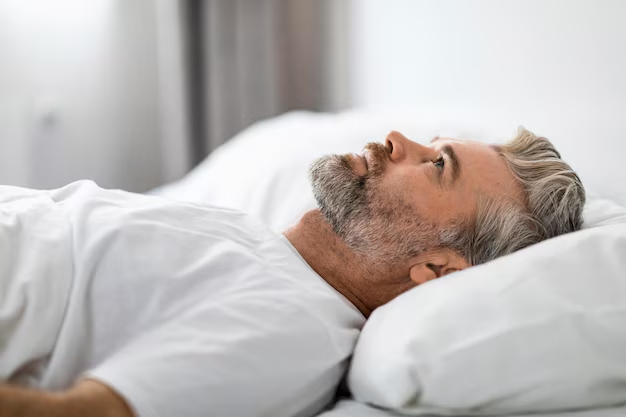Navigating Parkinson’s? Find Out If Tremors Stop When Sleeping
When living with Parkinson's disease, one of the most concerning symptoms is tremors. These involuntary, rhythmic muscle movements can significantly impact daily life. A pressing question from those affected is: "Do Parkinson’s tremors stop when sleeping?" Understanding this phenomenon can provide a clearer picture of managing daily activities and ensuring a restful sleep.
Understanding Parkinson's Tremors
What Are Parkinson’s Tremors?
Parkinson’s tremors primarily occur in the hands but can affect other parts such as the arms, legs, jaw, and face. Known as "rest" tremors, they typically appear when the muscles are relaxed or at rest, worsening with stress or excitement. Unlike other tremors associated with different conditions, these quivers can be particularly troublesome during the most mundane activities, like holding a cup or writing.
Why Do They Occur?
Parkinson’s disease is a progressive nervous system disorder. Tremors are a result of disrupted communication between the nervous system and the muscles due to a decrease in dopamine levels. Dopamine is crucial for transmitting messages within the brain, influencing movement and coordination.
Do Parkinson’s Tremors Stop During Sleep?
The Sleep Phenomenon
For many with Parkinson's, tremors often subside or disappear entirely during sleep. This cessation of movement generally occurs during the deeper stages of sleep, as the body enters a state of relaxation. Although this can bring relief, let’s explore why this happens.
Why Do Tremors Stop When Sleeping?
- Central Nervous System's Role: During sleep, particularly in the REM and deep non-REM stages, the body undergoes a natural paralysis of voluntary muscles, which can dampen the tremor activities.
- Reduced Dopamine Needs: While awake, the brain heavily relies on dopamine to manage movement. During sleep, the body's dopamine demands decrease, offering some respite from tremors.
- Physical Rest and Repair: Sleep is a time for the body to rest and repair. Hence, many symptoms, including tremors, often lessen or vanish.
The Importance of Sleep in Parkinson’s
Sleep Disturbances
Many with Parkinson’s experience sleep disturbances such as insomnia, REM sleep behavior disorder, and nighttime muscle cramps, independent of tremor activities. These disruptions can exacerbate daytime symptoms and fatigue.
Managing Sleep Issues
To improve sleep quality, consider the following strategies:
- Create a Consistent Sleep Schedule: Going to bed and waking up at the same time daily helps regulate the body’s internal clock.
- Establish a Relaxing Bedtime Routine: Warm baths, reading, or gentle stretching can signal the body that it's time to wind down.
- Manage Stress and Anxiety: Techniques like deep breathing, meditation, or light yoga can help reduce anxiety, which may, in turn, decrease tremors before sleep.
More Than Just Nighttime Relief
Understanding Resting vs. Intention Tremors
While tremors may stop during sleep, they reappear upon waking or during concentration on tasks. Understanding the difference between resting tremors (common in Parkinson's) and intention tremors (worse during activity) can help in distinguishing and managing symptoms.
Medication Management
Medication can play a vital role in reducing tremors:
- Levodopa: A staple in Parkinson’s treatment, converts into dopamine in the brain.
- Dopamine Agonists: Mimic dopamine’s effects and provide longer relief.
- Other Medications: Such as anticholinergics, can help reduce tremors in some individuals.
Always consult healthcare providers for guidance on medication and dosage.
Holistic Approaches
The Role of Diet and Exercise
A balanced diet rich in antioxidants and regular exercise can improve overall mobility and well-being:
- Engage in Physical Activity: Exercises like tai chi, walking, and swimming can improve balance and flexibility.
- Focus on Nutritious Meals: Emphasize fruits, vegetables, lean proteins, and whole grains to enhance nerve health and bodily function.
Alternative Therapies
Exploring therapies such as acupuncture, massage, and physical therapy can provide added relief from symptoms and improve quality of life.
Embrace Support Networks
Support Groups and Counseling
Connecting with others facing similar challenges offers emotional support and practical advice on navigating daily activities and treatments.
Professional Guidance
Physicians, neurologists, therapists, and sleep specialists play crucial roles in creating personalized management plans for Parkinson’s symptoms.
Final Insights
Parkinson's tremors, while often distressing during waking hours, typically subside during sleep due to the body’s natural processes. By addressing sleep disturbances, leveraging medications appropriately, and maintaining a healthy lifestyle, individuals can better manage symptoms. It’s invaluable to integrate multiple forms of support, from medical professionals to peer networks, to enhance the overall quality of life.
📝 Practical Takeaways:
- Tremors Subside During Sleep: Many experience relief from tremors during deep sleep stages.
- Sleep Consistency: Maintain regular sleep schedules to improve rest.
- Healthy Lifestyle: Diet and exercise bolster overall health and symptom management.
- Explore Support Networks: Leverage professional and peer support for comprehensive care.
- Medication Insights: Consult healthcare providers for tailored treatment plans.
Embrace these strategies to navigate the complexities of Parkinson's with greater ease and confidence. 🌟

Related Articles
- Are There Environmental Causes Of Parkinsons
- Can Alcohol Cause Parkinson's
- Can Concussions Cause Parkinson's
- Can Females Get Parkinson Disease
- Can Head Trauma Cause Parkinson's
- Can Parkinson Disease Cause Dizziness
- Can Parkinson's Affect Eyesight
- Can Parkinson's Affect Memory
- Can Parkinson's Affect Speech
- Can Parkinson's Affect Vision